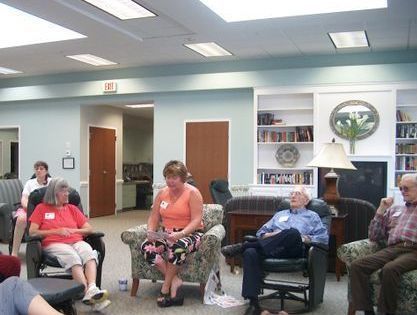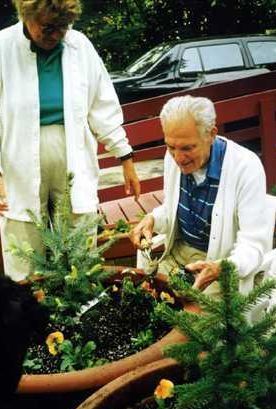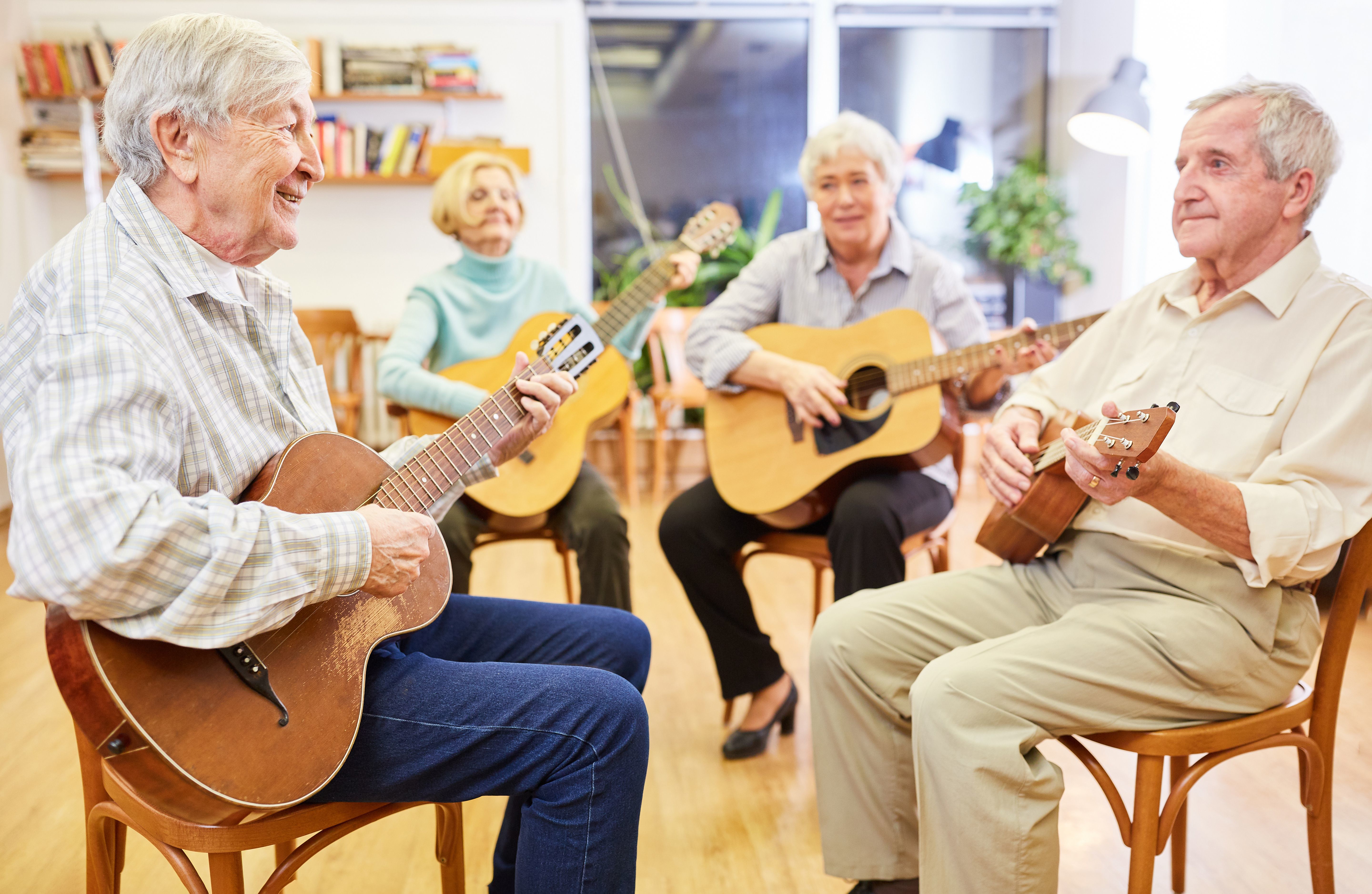"You're never too old to set a new goal or dream a new dream."
CS Lewis
Considering the looming Baby-Boom explosion that is about to reach the age when people begin entering long-term care, new and remodeled senior care facilities need to be made more responsive to the needs of the aging population. The minimum age requirement for these facilities is usually about 65, but most people make the move between the ages of 75 and 84. To truly serve this age group, it is important that care facilities recognize the true needs of older adults, begin to recognize the normal age-related changes they are experiencing, and provide appropriate environments to meet their needs. Residents of care facilities or in institutional settings are unable to make environmental modifications to meet their own personal needs. They rely on the facilities to support their age-related requirements.
Many of the issues addressed in the section on Designing Your Own Home also apply to senior care facilities, beginning with Access, Mobility, Exercise and Daylight, Ease and Accessibility, Handrails, Doors and Cabinetry, Controls and Seating. In addition, the topics of Light for Vision, Light for Health and Hearing Loss equally apply to senior care environments. For example, when addressing Hearing Loss, more than 80 percent of those 85 years’ experience hearing loss. This is the average age of residents living in senior care facilities. Better acoustical environments in these care settings would help prevent social isolation of hearing-impaired residents.
The last two years of the COVID pandemic have been difficult for everyone, but no population group has been more negatively impacted than residents of senior care facilities. Of the total deaths in the United States, 43% occurred in senior care facilities. The combined impact of the number of deaths, plus frightened families moving their loved ones out of care facilities, has led to a declining number of residents in senior care centers, forcing the industry to consider its options while addressing the factors that 1) may have contributed to the residents’ vulnerability, and 2) may have contributed to the spread of the infection.
Some indicators point to a compromised immune system among care facility residents. Both nocturnal sleep (supported by a healthy circadian rhythm) and high levels of circulating vitamin D3 support the immune system, but both are noticeably lacking in residents of long-term care. (See Light for Health) Numerous published studies have identified low light levels during the day and too much light and noise at night are primary causes of disrupted nocturnal sleep. Not having access to direct sunlight on the skin may contribute to the overall reduced capacity of the immune system. Oral supplements of vitamin D3 are available, but exposure to natural sunlight over time is much better. However, there is no supplement or substitute for experiencing bright light (daylight) during the day and quiet darkness at night.
For the Consumer:

Residents are encouraged to be outside on a daily basis to tend their flowers.
If you are looking for a senior care facility for yourself or loved ones, these are some of the considerations you should inquire about.
Ownership/Management: Review the Senior Housing News article, February 28, 2022: "White House Releases Sweeping Nursing Home Reform Proposals, Takes Aim at Private Equity Ownership."
Population Size. Current published literature reports that senior care centers with fewer residents fared better against Covid spread than care centers with a large number of residents in one large facility.
Private Rooms. These help to reduce the spread of disease, and also allow residents to control their own environment by blocking light and noise at night that would deprive them of a good sleep. Rooms with morning daylight would be best.
Outdoor Access. Immediate access to a secure outdoor environment from the common areas is important for the residents to experience daylight and sunlight exposure.

This bright and cheery common kitchen demonstrates the use of direct/indirect lighting application to provide reflected light off the ceilings and walls, thus lighting the space.
Sunlit Spaces. Secure outdoor spaces should be oriented to receive direct sunlight and provide areas to walk or sit in sun or shade.
Light Levels. All spaces in long-term care, especially the common areas, e.g., corridors, lounges, activity areas and dining rooms need high light levels that provide the quality and quantity of light necessary to support aging vision. (See Light for Vision).
Quality Lighting: Walls and ceiling should have a matte finish and be light in color to reflect the light within the space.
Experience Daylight Indoors: Common areas that provide daylight from above, e.g. skylights or clerestory windows, help strengthen the resident’s circadian rhythm, needed to promote nocturnal sleep and daytime alertness.

Diffused skylights in the living room provides high levels of light during the day. (See Light for Health)
Walkable Distances. For residents who are still ambulatory, the distance between the resident room and dining room should be within an easy walking distance.
For Care Center Managers:

Getting outdoors is good for the staff as well as the residents!
Increase daylight within the facility:
Perform a daylight survey to determine the rooms/areas that receive the most daylight.
Re-purpose empty multi-resident rooms with good morning light exposure to be “breakfast rooms”, satisfying the need for resident exposure to morning light.
Add skylights in dining rooms. Skylights must diffuse the light and block the bright beams of sunlight which create glare and shadows. Skylights provide daylight to a greater number of residents than can be served by windows. High levels of daylight are required to support circadian rhythms. Resident must be sitting within 9 feet of the window, looking toward the window or to either side, but with their back to the window, to receive the daylight stimulus.
Conduct a survey to determine obstruction to daylight penetration, both inside and out. Remove decorative window covering that is blocking daylight. Prune shrubbery that is blocking the daylight.
Glare is difficult to control on the east and west sides of a building, due to the rays from the rising and setting sun. Darker window shade materials are good to filter the brightness of the light while preserving some visibility to the outside.
Place a high value on nocturnal sleep by reducing both light and noise at night. Institute a ban on loud TVs after bedtime (around 8pm). If residents want to continue watching TV, require that they use TV-Ears (or similar products), so they can adjust the volume to their personal needs without causing problems for everyone else. Dim the corridor lights at night and, if possible, change the color to a buttery amber color. It was observed in one research project that once the lighting in the corridor changed, the visiting families took it as a cue to go home, and the staff began preforming their work in a quieter manner.
Capture unused outdoor real estate by creating accessible, secure gardens with hard surface walking paths (with no dead ends), and seating in both sun and shade.

